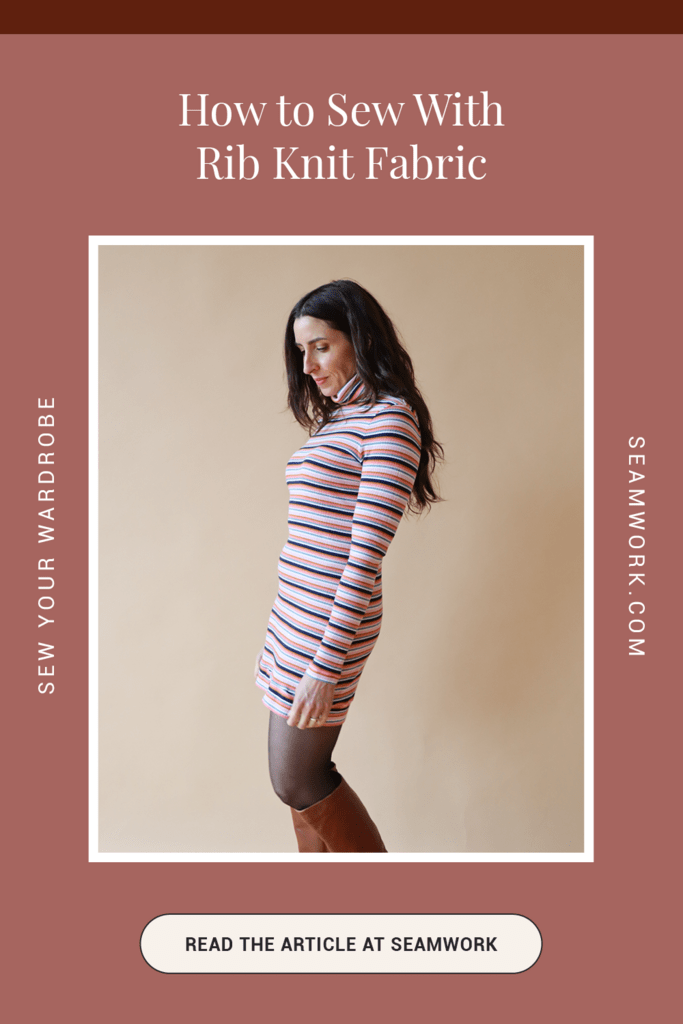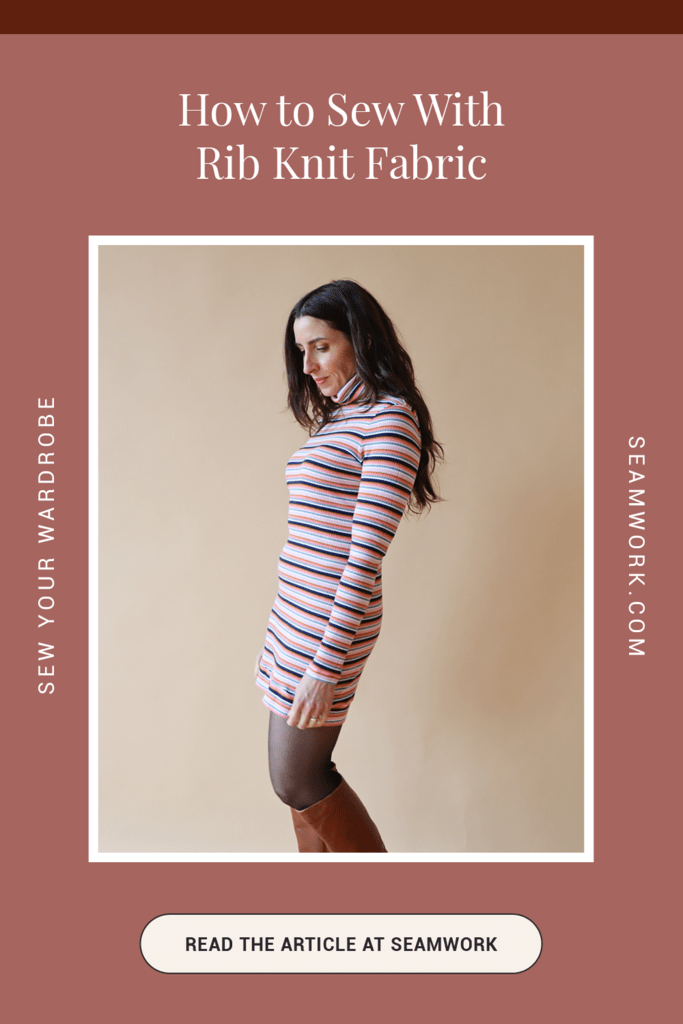Rib knits are a mysterious fabric. You might think they’re all the same, but there is so much to learn about this versatile textile. Rib knits have a few special tricks—they resist curling at the edges, don’t tend to wrinkle, and come in a bunch of different colors, weights, and textures.
But some questions come up around rib knits. For example, why are some rib knits stretchy and others are totally stiff? Can you sew a whole garment out of rib knits or just neckbands and cuffs? And what’s the deal with tubular ribbing?
What are rib knits?
Rib knits are easy to spot because of their corduroy-like ribs. These ribs are created from alternating knit and purl stitches when the fabric is made. As with the wales in corduroy, these ribs come in different widths, changing the texture of the fabric.
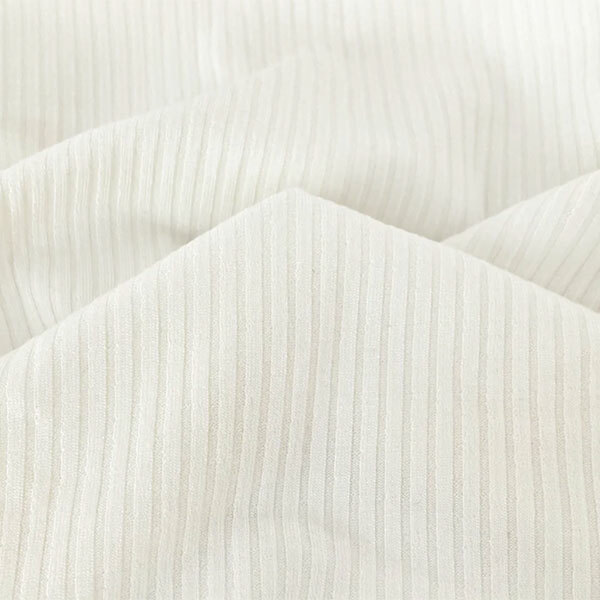
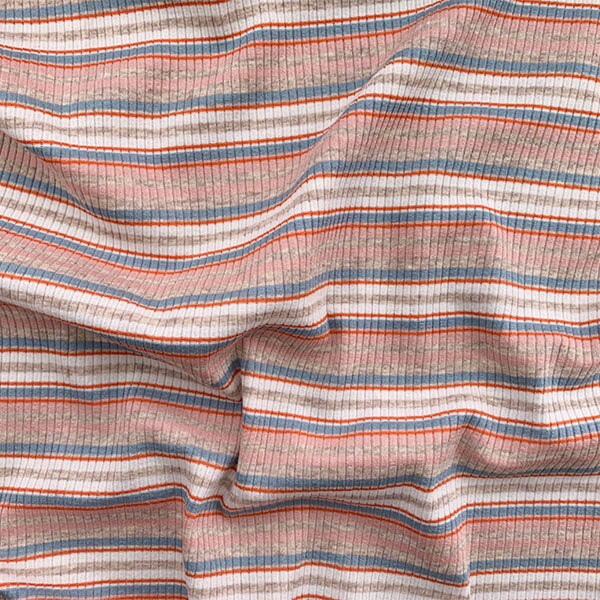
For example, there might be only one knit and one purl stitch, creating smaller ribs. You might only be able to see them if you stretch the fabric. Or there could be two, three, or more alternating stitches, creating wider ribs.
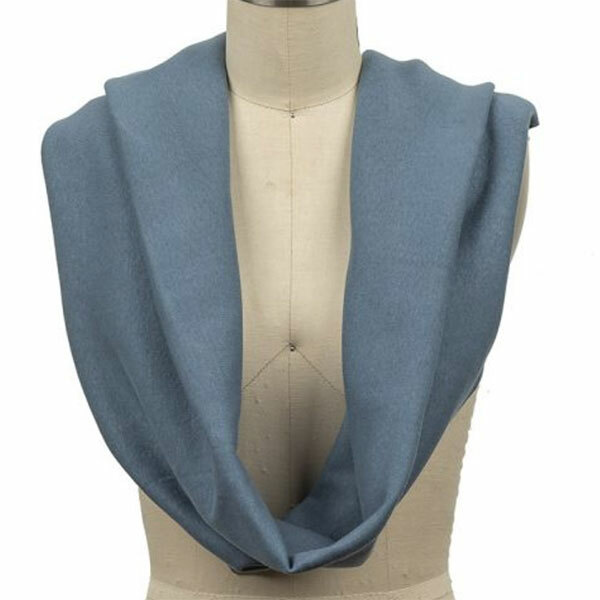
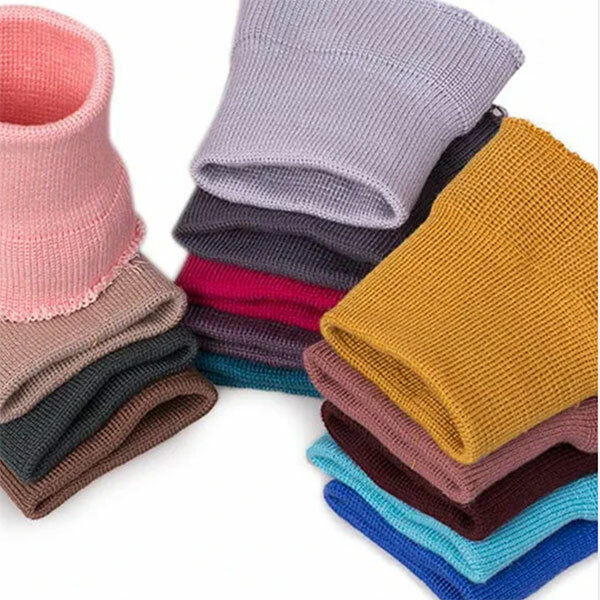
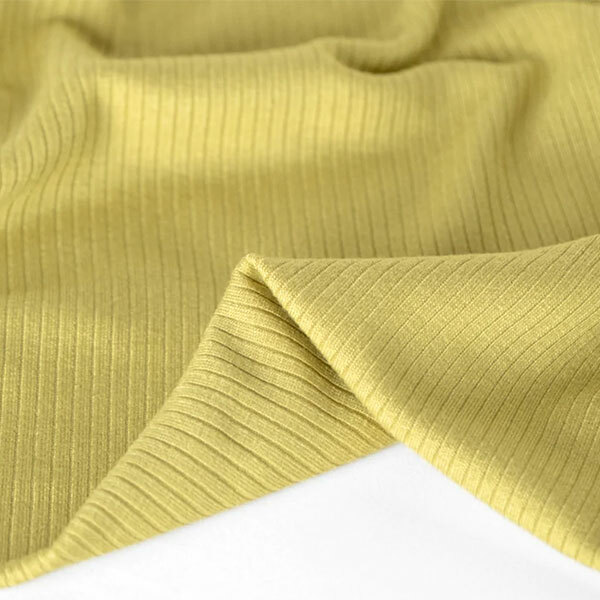
Another factor that can change the appearance and behavior of rib knits is the fiber contents. You’ll often find cotton blends with rayon, soy, or bamboo. You might also find rib knits that contain wool, linen, or other synthetics. These blends will give you more stretch, recovery, and drape than a 100% cotton rib knit. 100% cotton rib knits often don’t bounce back into shape once stretched.
What is ribbing, and how is it different?
Ribbing is technically a rib knit since it also has ribs, but it behaves much differently than the rib knits you’d use for sewing an entire garment.
Tubular ribbing is specifically designed for neckbands, cuffs, and waistbands, and when it comes off the bolt, it’s in a tube with no selvages. You can find it in wide or narrow tubes. The narrow tubes create instant, seamless cuffs you can sew onto your garments.
Ribbing can be 100% cotton, or you might find a blend with spandex to maintain shape. However, thicker ribbing is usually stiff, so you may not want to use it to sew an entire garment.
What can you sew with rib knits?
If you want to see a stylish rib knit dress, watch Sarai's project diary on our YouTube channel. She sewed the Lenny dress. In the video, she shares tips for sewing rib knits (including matching stripes!) and all the details about this project.
Rib knits make really comfortable shirts, tank tops, dresses, underthings, and leggings—in addition to cuffs, waistbands, and necklines.
Here are some Seamwork patterns that work well with rib knits.
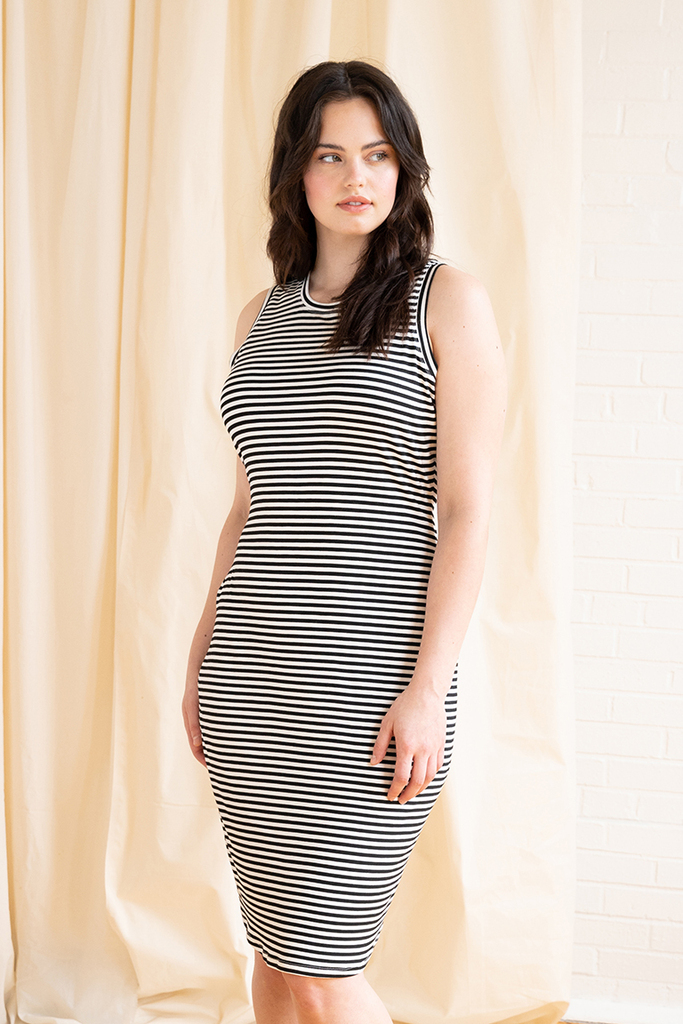
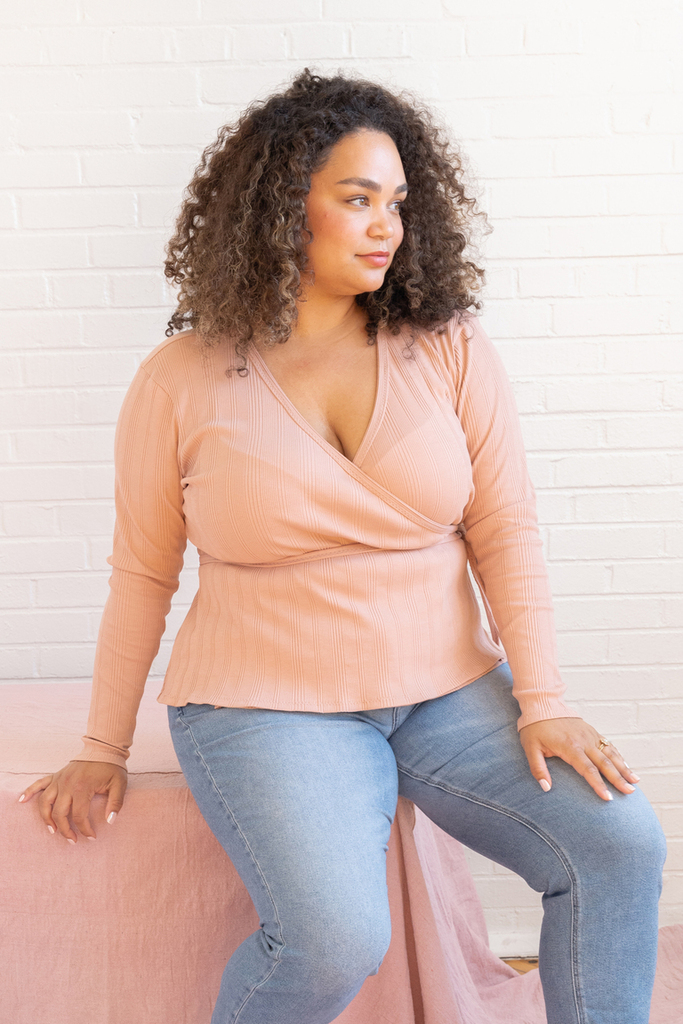
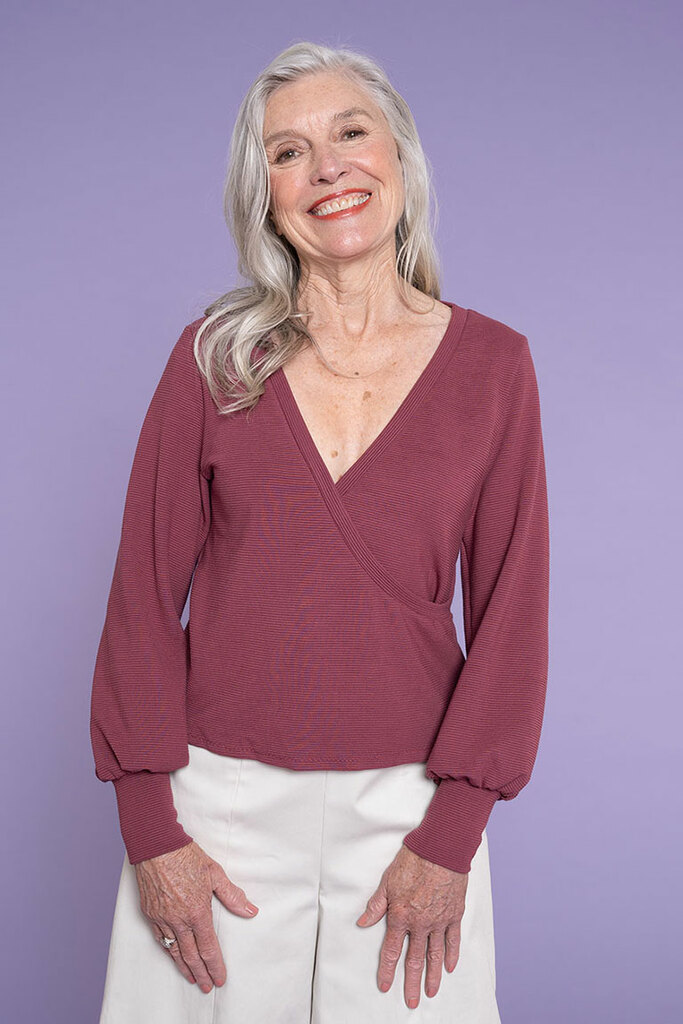
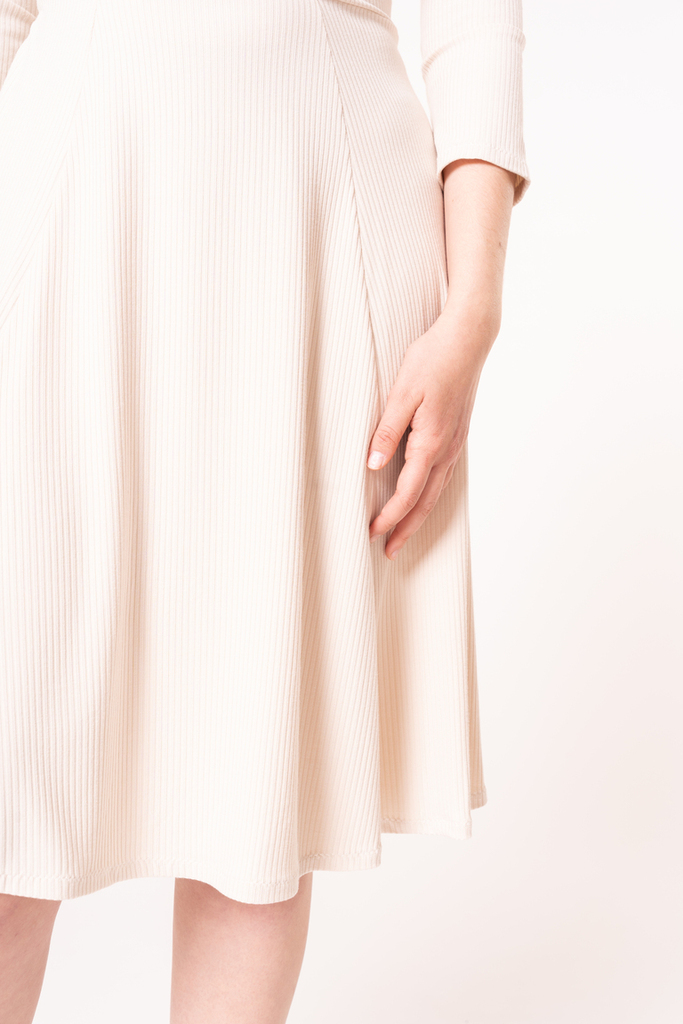
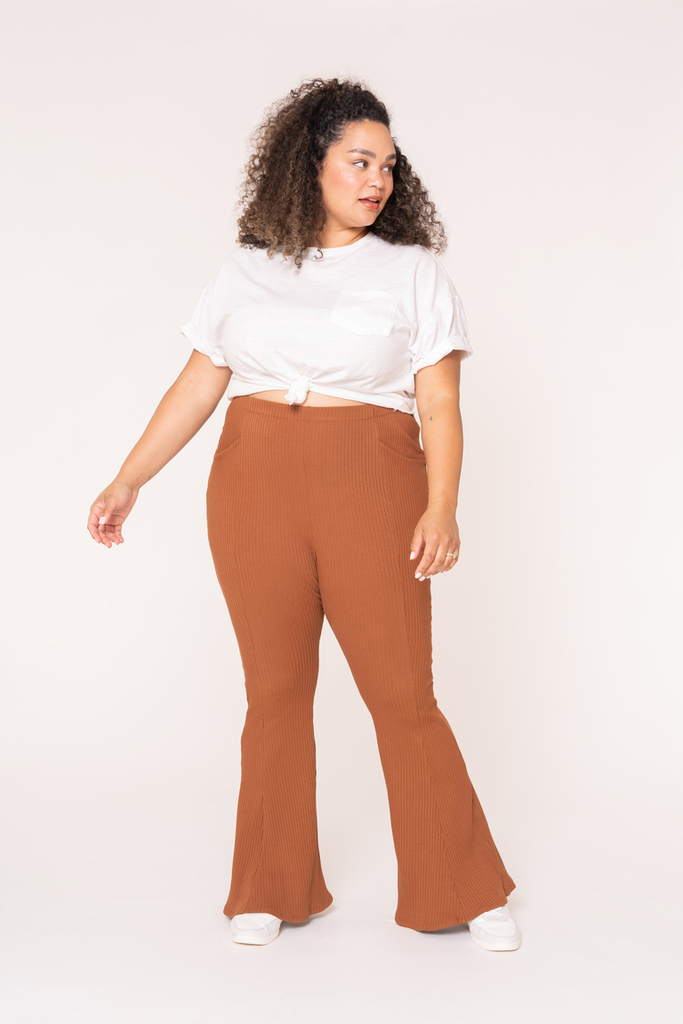
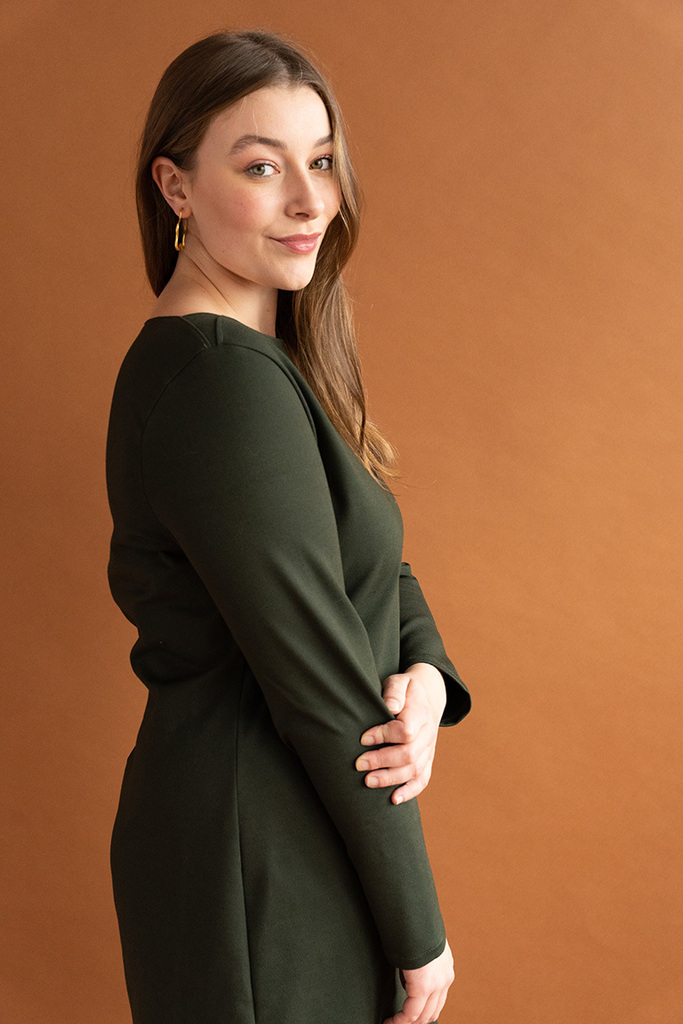
- For tees, tanks, and tops, look at the Julia tank, Goldie sweetheart tee, Ryan T-shirt, Orlando top, Ace top, and Lenny dress hacked into a turtleneck.
- For pants and leggings, try the Nash flared leggings, Mel joggers, and Shelly leggings.
- For dresses, try Aaronica or Luxsy.
- For loungewear, sew the Wallis romper, Maeve nightgown, Cal pajama set, Angela bodysuit, Kaye shorts and bra, Dana underwear and bra.
Tips for sewing rib knits
- Like any other knit, use a ballpoint needle and your favorite stretch stitch—or even better, a serger.
- If your serger is stretching your rib knit, check your differential feed because you might need to increase it.
- Stabilize hems and shoulder seams with knit interfacing, twill tape, or clear elastic, like in this video.
- A walking foot helps sew rib knits.
-
Check your stretch percentage before choosing a size. Rib knits that contain rayon are often very stretchy. - While you are testing stretch, ensure the fabric has good recovery—make sure it snaps back into shape after stretching it.
- You can often find rib knits that coordinate with sweatshirt fabric or French terry, but you can also contrast with a different color!
If you’re shopping online and need help interpreting a fabric’s weight or drape, read this article, How to Buy Fabric Online: Know Your Terms | Weight and Drape. It has everything you need to know!
Want to sew more knits?
Here are some resources for sewing other kinds of knit fabrics.
-
How to Sew With Sweater Knits: Whip up a warm wool cardigan without spending months knitting when you sew with sweater knits. -
Working With Double Knit: Learn what makes these fabrics such a joy to sew with and wear. -
All About Sweatshirt Fleece: What makes this fabric so cozy? -
How to Sew Knits Without a Serger: Sewing knits on a regular sewing machine is simple! Just follow these easy steps. -
A Guide to Coverstitch Machines: A comprehensive guide to using and purchasing a coverstitch machine. -
Perfectly Fitted Knits: Get knit-picky with fitting.
Love the article? Pin it for later.
